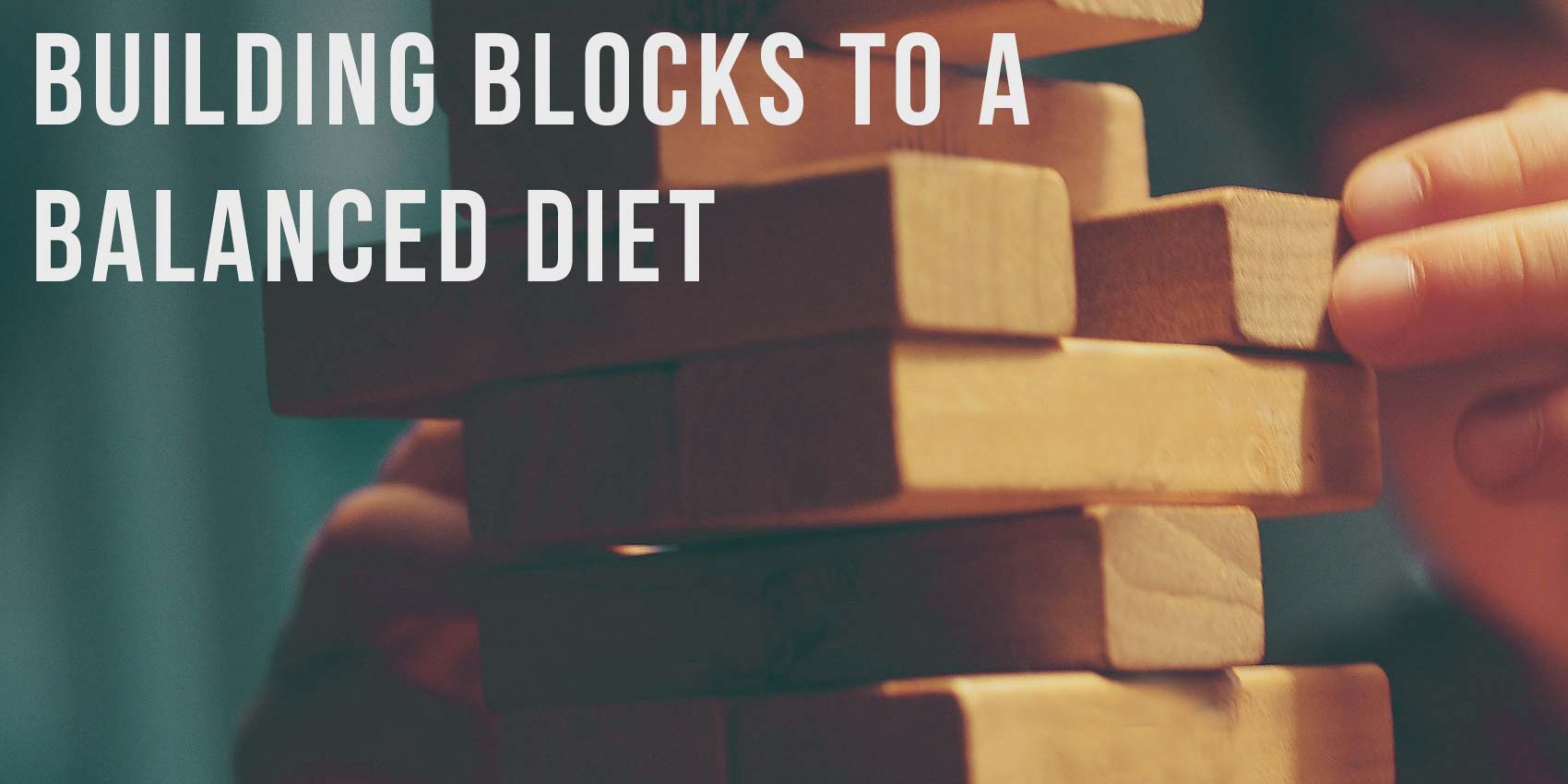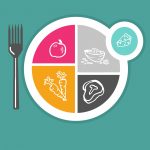14 Sep Building blocks to a balanced diet

How many calories are in a food is determined by the building blocks of that food. There are three building blocks: proteins, carbohydrates and fats. Foods generally have a combination of all three in various amounts. A food that is considered a pure protein (like what you eat on the MyPlate) is actually about 80% protein with a little fat and some carbohydrates. In general, fats are the highest in calories, then proteins and then carbohydrates. Each building block plays a very important role in maintaining a healthy body, so cutting out any one type of building block is generally not recommended. That’s why MyPlate has the different food groups: those groups make sure that you get healthy amounts of all the different building blocks of food.
So, to be healthy, you want to eat the right amount of calories for your age, height, gender, weight and activity level. You want to eat those calories according to the proportions on MyPlate. Through its major food groups, MyPlate includes a balance of health fats, carbohydrates and proteins that will allow you to eat the right amount of calories and minimize the consumption of empty calories or food products that can be harmful.
The way foods are prepared is something you will want to pay attention to when compiling YourPlate.) For instance, fried foods contain a lot more calories than the same food not-fried (when food is fried it loses water and absorbs fat). That means that you will be adding a lot of calories to your diet in the form of added fat that (due to the frying process) is not the kind of fat you want (you will read more about different fats below).
“For example, one small baked potato (100 grams) contains 93 calories and 0 grams of fat, while the same amount (100 grams) of french fries contain 319 calories and 17 grams of fat.
As another example, a 100-gram filet of baked cod contains 105 calories and 1 gram of fat, while the same amount of deep-fried fish contains 232 calories and 12 grams of fat.”
( Source: https://www.healthline.com/nutrition/why-fried-foods-are-bad#section2)
So if you ate a baked potato and baked cod for dinner, you would consume 198 calories and 1 gram of fat. While if you chose the fried cod and french fries you would consume 551 calories and 29 grams of fat. That’s a big difference!!! The fried food gives you more calories and fats, but not any more of the nutrients your body needs to function well. MyPlate proportions help to ensure that the foods you consume will help you meet your building blocks and nutrient needs with the right amount of calories.
The biggest take away from this example is that by filling “YourPlate” with food that meets MyPlate recommendations you are healthier! Whereas, when you fill “YourPlate” with food that is high in “not good for you” fat and calories, you are not getting the proper balance of nutrition, building blocks and calories. This puts you at risk for other health issues. This is why understanding nutrition is so key to your overall health. Excess weight leads to all sorts of inflammatory issues like obesity, heart disease, cancer, and diabetes.

DID YOU KNOW: When it comes to chicken choices, go for rotisserie at the market when in a hurry—it’s packed with protein. Whereas fried chicken is coated with breading and fried so each piece packs in more calories and fat. A diet high in grease, like fried foods, 4-6 times a week can raise your risk of heart disease by 23% and type 2 diabetes by 39%.
(Source: webmd.com)
Now that you know about proportions, calories and the building blocks of MyPlate, you have the foundation information for following MyPlate. So let’s dig into the first type of food of the MyPlate portions…




Post Question:
Which group of food from MyPlate do you eat the most? The least?
Answer the post question here
What's being said